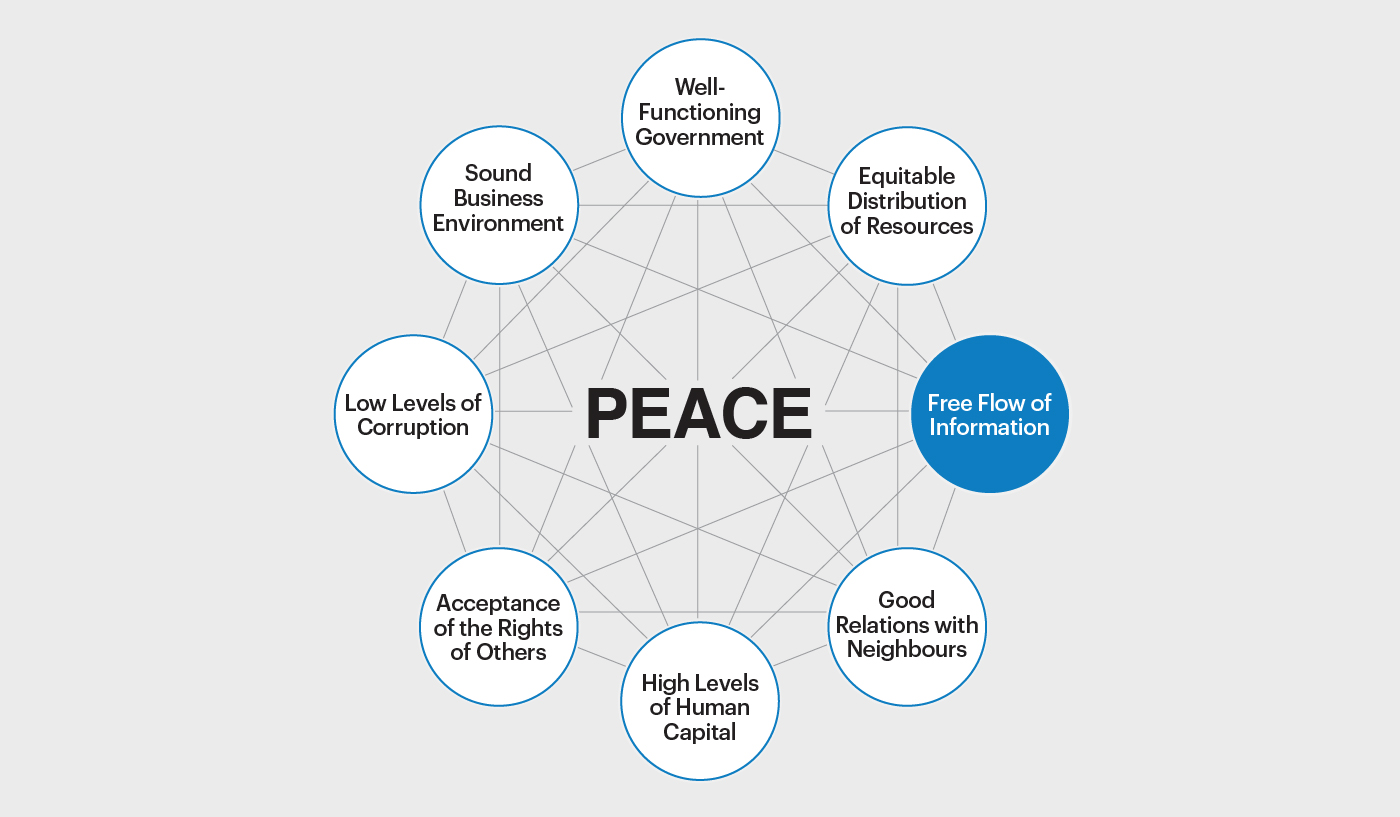One of the key aims of the IEP Ambassador Program is to introduce participants to the Positive Peace Framework. This equips Ambassadors with an awareness of the ways in which local, community-led action can be used to move towards more sustainable, peaceful societies. Equipped with this new way of thinking, Ambassadors are tasked with designing and implementing a peace project.
IEP Peace Ambassador and AfriCare Peace Initiative Member, Lepan Tyoden, observed the ways social media has impacted the local narratives in Jos, Plateau State, Nigeria and saw this as an opportunity to establish a platform for peacebuilding.
For his peace project, Lepan took what he knew about social media’s influence and designed a seminar discussing “The Use of Social Media for Peacebuilding.”
The Plateau State has faced violent conflict in recent years due to sectarian unrest, resulting in communities plagued with mistrust and instability. One of the fuels of this conflict has been the spreading of misinformation, commonly at the hands of social media. Lepan experienced this first hand as Nigerian youth have often been fooled by information received through social media platforms.
In his report, Lepan recalled a post which claimed to know the plans of the Sokoto Caliphate to be implemented in two months. Due to its chilling nature, this graphic immediately made its rounds through social media platforms, like WhatsApp. It was taken at face value and caused fear and panic among the people. If someone verified the information before sharing it as a recent update, they would have known it was in circulation a year ago and no longer relevant to the present day.
Project Implementation and Success
A key element of the Positive Peace Framework are the eight pillars of Positive Peace. Examples of these pillars include: the free flow of information, a well-functioning government; and an equitable distribution of resources, amongst others. Each one is interdependent on the rest, and IEP has found that because of this, it is best for changemakers to either address all of the pillars at once, or to focus in on the weakest one.
Having experienced the impact of misinformation, alongside what he learned through the Positive Peace Framework, Lepan decided to challenge the youth of Jos to use their online platform to advocate for and build peace within their communities.
To do this, Lepan enlisted the help of fellow Peace Ambassador and Executive Director of Africare Peace Initiative, Ms. Rachel Nuhu Birma. With a focus on peacebuilding and social media, he zoned in on the pillar “Free Flow of Information” at Ms. Rachel’s suggestion.

There was evident value in inviting individuals with a social media presence to attend, so Lepan set the condition that participants must be active social media users to take part in the workshop. To achieve this audience and mobilize the participants, Lepan invited and recruited the help of three bloggers, Herbert, Victor, and Paul, to mobilize the participants.
The number of participants exceeded Lepan’s expectations. Eighteen participants of different genders and religions joined the seminar, made up of six bloggers, including Herbert, Victor, and Paul, and the rest being active social media users. After an explanation of IEP’s research and the Positive Peace Framework, participants were tasked to use the word FOCUS; (F) Fact, (O) Objective, (C) Creativity, (U) Utilize, (S) Serve; as an acronym to aid them in analysing the purpose and impact of their social media posts.

Although most participants mentioned they never thought of using social media for peacebuilding prior, they were all encouraged to understand social media as not only an online community, but also as a platform where information can be used as enablers and connectors in achieving Positive Peace.
All participants agreed to create a WhatsApp group to use for future verification of information, forestalling misinformation sharing that could lead to conflict in Jos, and to work as Peace Ambassadors in their own communities.
IEP Ambassador Program
Over the course of the IEP Ambassador Program, participants engage in a series of webinars where they are introduced to the IEP’s Positive Peace Framework. The Positive Peace Framework involves the use of a systems-based approach to better understand the creation and maintenance of peaceful societies.
IEP’s empirically based research teaches us that the health of a society must be understood within the wider context of its ‘attitudes, institutions, and structures’. Where these are positive, they will contribute to the creation of a state of ‘positive peace’. This is as opposed to the common practice of viewing peace as being measured only by the absence of violence, also known as ‘negative peace’.
If you are inspired by this story of some of our incredible IEP Peace Ambassadors, expressions of interest for our upcoming October 2022 Peace Ambassador cohort are open now.